 History remembers well the oil shock of 1973, when Arab countries cut off oil supply and created shortages and rising prices around the world. But this was not the first time the “oil weapon” had been deployed. The 1967 War marked a turning point in the global oil market, and today’s oil market structure was shaped by events that took place in the decade following the war.
History remembers well the oil shock of 1973, when Arab countries cut off oil supply and created shortages and rising prices around the world. But this was not the first time the “oil weapon” had been deployed. The 1967 War marked a turning point in the global oil market, and today’s oil market structure was shaped by events that took place in the decade following the war.
In reaction to the June 1967 war, Saudi Arabia, Kuwait, Iraq, Libya, and Algeria banned oil shipments to the United States, United Kingdom, and West Germany. The flow of oil around the world was completely reorganized in response, with oil from non-Arab countries diverted to the embargoed countries in Europe. Closure of the Suez Canal during the war made this shift even more challenging, especially for European consumers. But oil was abundant and cheap during this time and newly deployed “supertankers” conveyed oil to markets that needed it. After the initial shock, a maximum of 1.5 million barrels per day (mbd) of oil was removed from the market from June through August 1967.
The United States was the primary source of spare oil production capacity at the time. The United States increased production by about 1 mbd and Venezuela and Iran (under the Shah) were able to make up the rest, ameliorating the shortage. The “oil weapon” largely failed in 1967, and was most harmful to the oil producing countries that gave up substantial revenue during the embargo.
However, the oil market changed after the 1967 War in ways that made the “oil weapon” much more powerful. Rapid demand growth consumed U.S. spare oil production capacity, and by 1970 net oil imports to the United States were rising rapidly. The United States was no longer the source of spare capacity and “security margin” in the oil market. At the same time, oil production in the Middle East was also growing quickly, meeting two-thirds of global demand growth between 1960 and 1970.
The meaning of these oil market changes became obvious during the 1973 October war. Again, Arab states embargoed oil supply to countries friendly to Israel. But this time, the market was much tighter and more dependent on Middle East oil, and the outcome was very different. The net loss of supply was 4.4 mbd by December 1973, representing 14 percent of internationally traded oil. There was simply not enough oil available to meet the shortfall. The result was skyrocketing oil prices, gas lines in many countries, and perhaps most importantly, a new understanding of the role oil could play in geopolitics.
A trend toward nationalization of oil resources had already begun before the 1973 war, with Iran nationalizing in 1951, Iraq in 1961, and Egypt in 1962. After the 1973 War, realizing the growing value of their oil industries, two more countries followed—Kuwait in 1975 and Saudi Arabia through the late 1970s. The oil-rich countries in the region took in huge amounts of money during the 1973 embargo and the second oil shock during the Iranian revolution in 1978-79.
However, international oil companies also responded to scarcity and high prices with a rush of new exploration. These companies were also looking for new production after having lost their Middle East concessions. Oil production grew rapidly in areas that had not seen significant production before, such as the North Sea, Malaysia, Angola, and Alaska. The resulting surge in production set up the oil price crash of the mid-1980s, and a pattern of boom and bust investments that continues to this day.
Furthermore, the world’s primary institution for energy security among oil consuming countries, the International Energy Agency (IEA), was established in 1974 in response to the 1973 embargo. The IEA encourages member countries to hold oil stocks to counteract shortages and provides a platform for energy policy cooperation, a counterbalance to OPEC on the production side of the equation.
The Brookings Institution is committed to quality, independence, and impact.
We are supported by a diverse array of funders. In line with our values and policies, each Brookings publication represents the sole views of its author(s).
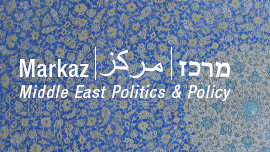
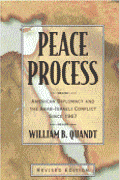

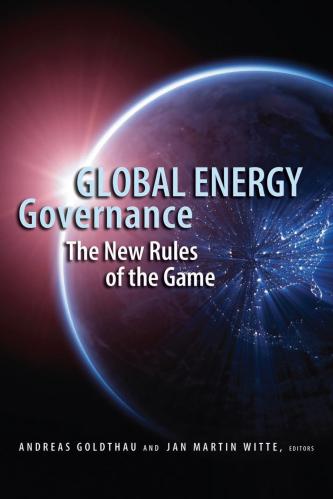

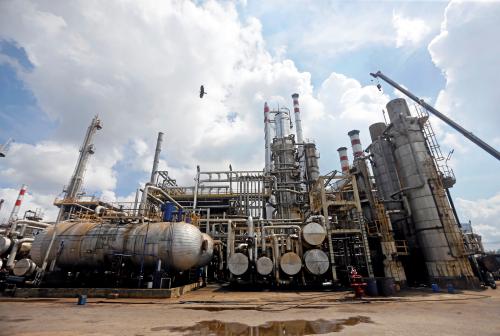
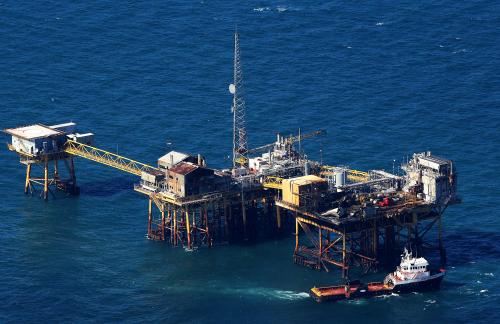




Commentary
The 1967 War and the “oil weapon”
June 5, 2017